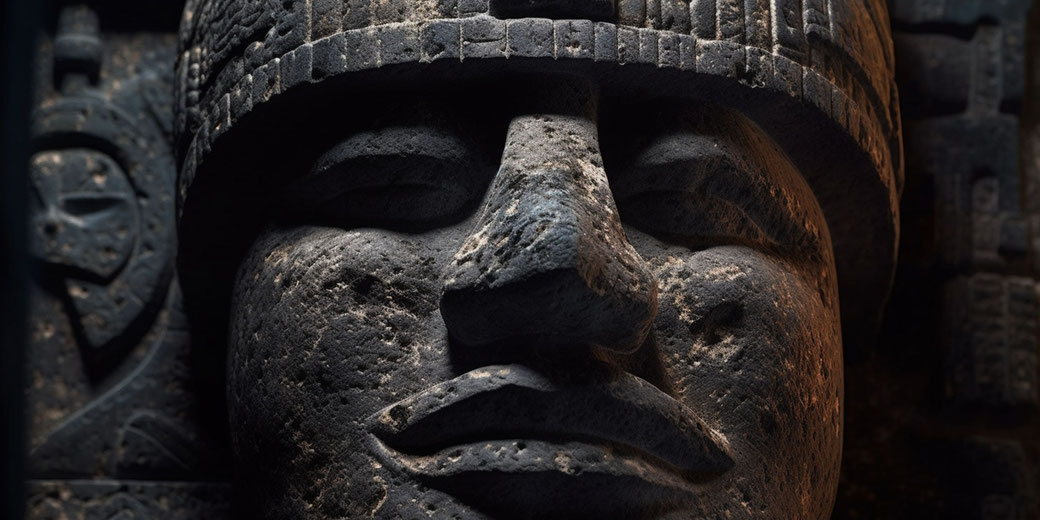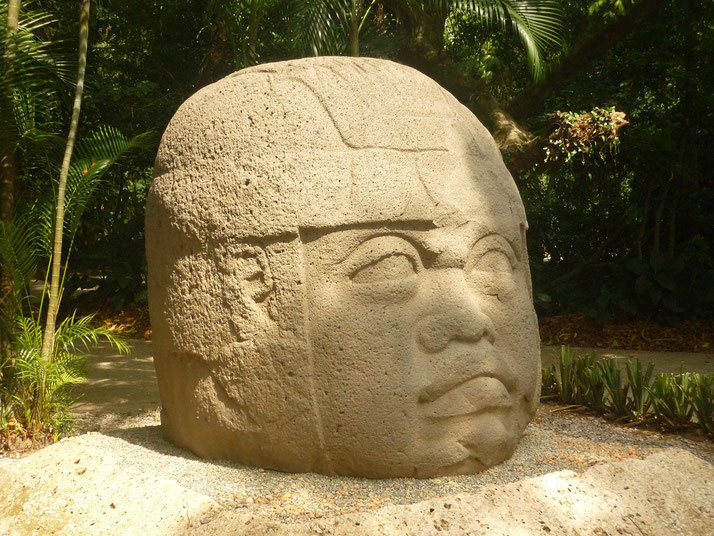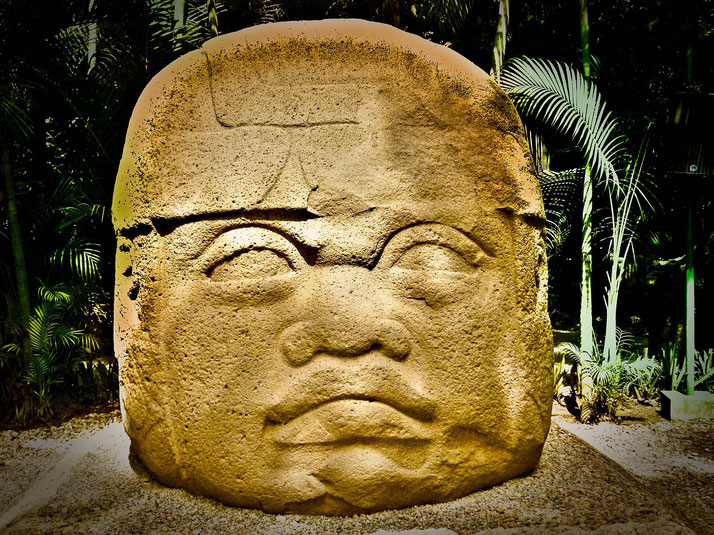Why did the ancient Olmecs carve colossal heads out of stone?

The Olmec civilization, one of the earliest and most influential cultures in Mesoamerica, has left behind a legacy that continues to captivate historians, archaeologists, and enthusiasts alike.
Among the most striking remnants of this ancient civilization are the colossal Olmec heads, monumental stone sculptures that have become emblematic of Olmec art and culture.
These massive stone carvings, each uniquely detailed and meticulously crafted, provide a fascinating glimpse into a civilization that thrived thousands of years ago.
Who were the Olmec?
The Olmec civilization, which flourished from about 1400 to 400 BCE, was centered in the tropical lowlands of south-central Mexico, in the modern-day states of Veracruz and Tabasco.
Although the Olmecs left no written records, they are credited with establishing many of the foundational aspects of Mesoamerican culture, including a calendar system, hieroglyphic writing, and a complex pantheon of gods.
However, it is their distinctive art, particularly the colossal heads, that has most captured the world's imagination.
When were the colossal Olmec heads discovered?
The first discovery of the colossal Olmec heads dates back to the late 19th century, but it wasn't until the mid-20th century that their true cultural and historical significance began to be recognized.
The initial discovery was made by a farm worker in 1862 on a hacienda in the Mexican state of Veracruz.
This first head, later named "Tres Zapotes Colossal Head 1," was largely ignored by the scientific community at the time, as the Olmec civilization was not yet recognized as a distinct culture.
The rediscovery of the Olmec heads in the 20th century is largely credited to Matthew Stirling, an American archaeologist.
Stirling led a series of expeditions to Mexico in the 1930s and 1940s, sponsored by the Smithsonian Institution and National Geographic.
During these expeditions, Stirling and his team uncovered several more colossal heads, along with other Olmec artifacts.
These discoveries sparked a renewed interest in the Olmec civilization and led to the recognition of the Olmecs as one of the earliest complex societies in Mesoamerica.
The colossal heads were found in a variety of locations, including San Lorenzo, La Venta, and Tres Zapotes, which are considered the major centers of Olmec civilization.
The contexts of these discoveries varied as well. Some heads were found in ceremonial centers, while others were found in more isolated locations.
Some were found upright, while others were intentionally buried or toppled over, suggesting a possible ritual significance to their placement.
What are the stone heads?
The colossal Olmec heads are monolithic sculptures carved from large boulders of volcanic basalt.
Despite their name, these sculptures are not just heads but also include part of the upper torso, with the focus on the face and helmet-like headdress.
The heads vary in size, with the smallest standing at approximately 1.47 meters (4.8 feet) high and the largest reaching up to 3.4 meters (11.2 feet) in height.
The weight of these massive sculptures ranges from 6 to as much as 50 tons.
Each of the 17 known heads is unique, with individualized facial features that suggest they may represent specific individuals.
The faces are typically mature, with fleshy cheeks, flat noses, and slightly crossed eyes, a feature often seen in Olmec art.
The lips are thick, and the mouth is usually portrayed in a neutral or slightly downturned expression, giving the heads a solemn or even stern appearance.
The heads are all wearing helmet-like headdresses, which are thought to be related to warfare or ball games, activities associated with leadership and power in many Mesoamerican cultures.
The helmets are intricately detailed, with various designs that may indicate rank or affiliation.
Some helmets feature elements such as bird motifs or stylized jaguars, while others have more abstract patterns.
Despite the passage of time and exposure to the elements, the craftsmanship of the Olmec heads is still evident.
The sculptors demonstrated a remarkable understanding of the properties of the stone, skillfully working the hard basalt to create realistic facial features and intricate details.
The heads were likely carved using stone tools, a process that would have required considerable time and effort.

How were the Olmec heads made?
The heads were carved from massive boulders of volcanic basalt, a material known for its hardness and durability.
The source of this basalt was the Tuxtla Mountains, located approximately 60 kilometers (about 37 miles) from the main Olmec centers.
The process of carving these colossal heads would have required considerable skill and effort.
The Olmecs did not have metal tools, so they likely used harder stones such as jade or obsidian to shape the basalt.
The rough form of the head would have been created first, followed by the more detailed features.
The final stage would have involved polishing the surface of the sculpture to create a smooth finish.
This entire process would have taken several months, if not years, to complete.
Once the heads were carved, they had to be transported to their final locations. Given the size and weight of these sculptures, this would have been a significant challenge.
It is believed that the Olmecs used a combination of sledges, rollers, and rafts to move the heads.
The boulders would have been dragged or rolled onto wooden sledges, which were then pulled by teams of people.
For parts of the journey, the heads may have been floated on rafts along rivers.
This method of transportation would have required a detailed understanding of the local terrain and waterways, as well as considerable manpower and coordination.
Why were they made?
Given the individualized features of the heads, it is widely accepted that they represent specific individuals, likely important figures within the Olmec society.
The most common theory is that these figures were rulers or elite members of the society, possibly warrior-kings.
The helmets worn by the figures depicted in the heads are often associated with warfare or the Mesoamerican ballgame, both of which were activities linked to leadership and power in many ancient Mesoamerican cultures.
The intricate designs on the helmets may indicate rank, affiliation, or achievements of the individuals represented.
Some helmets feature elements such as bird motifs or stylized jaguars, which are common symbols in Olmec iconography and may have spiritual or religious significance.
The facial expressions of the heads are typically solemn or stern, conveying a sense of authority and power.
The slightly crossed eyes seen in many of the heads are a distinctive feature of Olmec art and may have been associated with a state of spiritual or visionary trance.
This feature, along with other aspects of the heads, suggests that the individuals represented may have had a religious as well as political role within the society.
The placement and orientation of the heads at their original sites may also carry symbolic meaning.
Some heads were found in ceremonial centers, while others were found in more isolated locations.
Some were found upright, while others were intentionally buried or toppled over. These variations suggest that the heads may have been used in different contexts, possibly related to rituals, ceremonies, or the commemoration of significant events.

Their influence on later Mesoamerican cultures
The Olmecs are often referred to as the "Mother Culture" of Mesoamerica, as they established many of the cultural patterns and artistic styles that were adopted and adapted by subsequent societies.
The tradition of monumental stone sculpture, exemplified by the colossal heads, was one of the most significant contributions of the Olmec civilization.
This tradition was embraced by later cultures such as the Maya, the Zapotec, and the Aztec, who created their own monumental sculptures, albeit with their unique stylistic elements and symbolic meanings.
The concept of portraying rulers or deities in large-scale stone sculpture became a common practice in Mesoamerica, serving as a powerful visual representation of authority and divine power.
The Olmec style, characterized by naturalistic portrayals and intricate detailing, also influenced the artistic expressions of later cultures.
The slightly crossed eyes, the downturned mouth, and the fleshy features that are distinctive of the colossal heads can be seen in the artistic representations of several later Mesoamerican societies.
These stylistic elements became part of a shared artistic vocabulary that spanned across time and space in Mesoamerica.
Furthermore, the themes represented in the colossal heads, such as power, authority, and possibly religious trance, resonated with later Mesoamerican cultures.
The association of leadership with warfare or the ballgame, as suggested by the helmets on the colossal heads, was a recurring theme in Mesoamerican societies.
Similarly, the potential spiritual significance of the heads, as indicated by their facial expressions and the contexts in which they were found, aligns with the central role of religion and ritual in later Mesoamerican cultures.
What do you need help with?
Download ready-to-use digital learning resources
Copyright © History Skills 2014-2024.
Contact via email
With the exception of links to external sites, some historical sources and extracts from specific publications, all content on this website is copyrighted by History Skills. This content may not be copied, republished or redistributed without written permission from the website creator. Please use the Contact page to obtain relevant permission.





